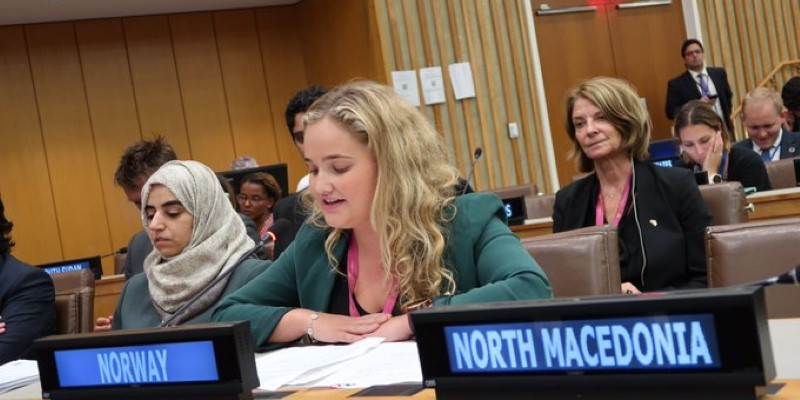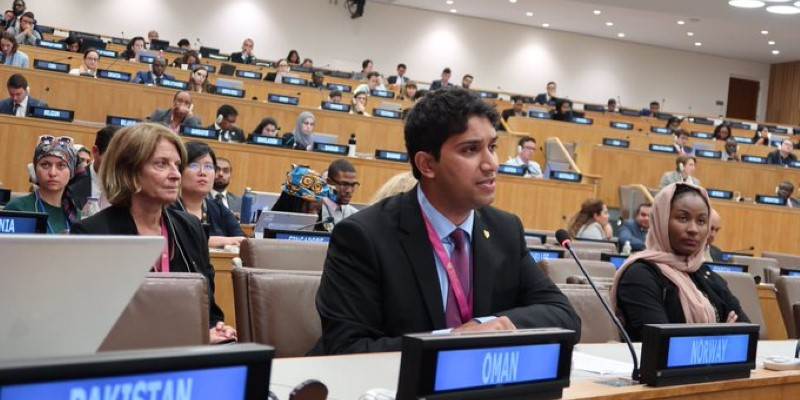Check against delivery
Chair, distinguished delegates,
Never could I have imagined that I would have the privilege of representing my fellow youth, and my country, here, at the pinnacle of international solidarity and cooperation.
When my father arrived at Oslo international airport as a young man in 1982, it was not given that he would settle in his new home country. Luckily for my father, he was effectively integrated into the Norwegian educational system.
I wish my father’s story was the story of every immigrant, every person displaced, and every person fleeing and seeking refuge. That is not the case.
Chair, the numbers are unsettling: The UNHCR estimates that three point seven million displaced children have dropped out of the educational system. In refugee camps all around the globe, there is a terrifying lack of educational infrastructure. The issue ensues when refugees arrive in their new home country - integration into national educational systems is often chaotic at best, and non-existent at worst. At an average, the UNHCR estimates that the teacher-student ratio for displaced children and youth is one to seventy.
Chair, displaced children and youth are just one example of a marginalized group being denied a basic human right. The same goes for many indigenous children and youth, who are facing national educational systems with a racial and assimilating bias. Being denied the right to education in their native tongue, utilizing educational systems as tools to erase their culture and traditions from their collective memory, effectively creating second-tier citizens, can lay the groundwork for unforeseen consequences. While making up 5% of the world’s population, indigenous people also make up 15% of the world’s poorest.
Chair, education for all must be in front and center of development. SDG target 4.5 sets a clear goal of ensuring vulnerable children access to all levels of education. The political compasses are in place. In addition to SDG 4, UN resolution 64/290 and the resolution on the rights of indigenous peoples state clearly that education is a human right. This must be acted upon.

Amalie Gunnufsen from the Norwegian Young Conservatives giving Norway's statement in Third Committee on Social Development. Photo: NorwayUN/Vilde Bye Dale.
Chair, on behalf of Norwegian youth, we call upon the United Nations and the international community at large, to ensure that all children and youth get access to the education they have the right to receive.
Chair, our generation will inherit a world with great challenges. But we strongly care about the world we are inheriting, and as the largest youth generation of all times, we can be the force of change. Youth in conflicts are often portrayed as either victims or perpetrators. But youth can play a key role in the solution. I believe that if you give youth a chance to contribute, they will take responsibility and become advocates for peace.
Chair, today more than 600 million youth live in fragile states or states affected by conflict.
In many fragile states, youth make up the majority of the population, and we know that higher youth populations increase the risk of armed conflicts. That does not mean that youth is the problem, but rather a symptom.
Chair, UN Security Council Resolutions 2250 and 2419 focus specifically on youth in peace and security. These resolutions challenge the way youth are portrayed, and highlight youth as positive actors of change. The resolutions emphasize the importance of including youth in all stages of peace building, from peace talks to implementation on ground. We call upon all member states to implement resolutions 2250 and 2419 to ensure sustainable and lasting peace.
Let us give youth a chance to be the force of change, and make the future we want and need.
Thank you, Chair.
